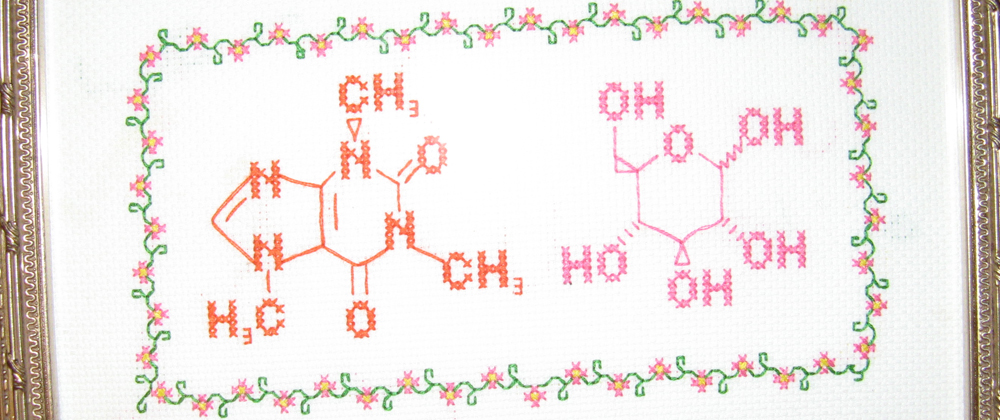In a post last week, I mentioned a set of standards put forward by Carol Henry (a consultant and former vice president for industry performance programs at the American Chemistry Council), who says they would improve the credibility of industry-funded research.
But why does industry-funded research have a credibility problem in the first place? Aren’t industry scientists (or academic scientists whose research is supported by money from industry) first and foremost scientists, committed to the project of building accurate and reliable knowledge about the world? As scientists, aren’t they just as hard-headed and devoted to objectivity — indeed, to truth — as the rest of their professional community?
I have no doubt that many industry (and industry-funded) scientists do take good knowledge-building as their most important job. And this means that some of those who depart from this commitment are making things harder for those scientists whose loyalties to their industry benefactors do not extend to misrepresenting the truth. Plus, of course, they may be misleading policy makers and the public by passing off as reliable scientific knowledge something that is not.
In the article “Tobacco Industry Influence on Science and Scientists in Germany,” [1] Thilo Grüning, Anna B. Gilmore, and Martin McKee draw on internal tobacco industry documents (released in 1998 as part of the settlement of litigation by the state of Minnesota against tobacco companies) to identify the strategies tobacco companies used to influence scientists and to distort science.
Science Debate 2008: It’s not the candidates’ answers that leave me cold
… but the questions that they were answering!
Regular readers will know (from these posts, among others) that I think the extent to which presidential candidates have gotten right with science (or with reliable advisers on same) is important information for voters to have.
Indeed, I was hoping to get some nourishing information (building an informed electorate and healthy democracy with 12 vitamins and minerals!) when I checked out Obama’s and McCain’s answers to the Science Debate 2008 questions. And, while it is possible to glean information about McCain’s and Obama’s attitudes toward science and its role in the public sphere from these answers, there was rather less straight talk than I had hoped.
The reason for that, I think, has a lot to do with the 14 questions actually put before the candidates — questions, Michael Eisen points out, that sidestep the science-y heart of the matter for all-too-familiar political territory:
Seeking advice from stargazers.
Reader hp asks:
Do you (or your commenters) know what to look out for in a small-child-friendly telescope? My daughter (now aged 4.5) has been space-obsessed for over a year now, and I’d like to encourage her but am nervous of spending a lot of money on the wrong thing.
For those of you who look at the night sky with kids (or who once looked at the night sky while kids), what are your suggestions? What are the crucial features of a decent ‘scope, and which of the bells and whistles are things you can live without (and without paying for)? How important do you think it is for a kid to be able to mess with the adjustments herself (and what kind of ‘scopes would make it easier for a kid to make the adjustments herself)?
(It’s worth noting that, in a post on measuring devices for kids, Natalie mentioned she had heard an astronomer recommend binoculars as a good place for kids to start in terms of star-gazing instrumentation. So if you have good binocular recommendations for 4- to 6-year-olds, lay those on us, too. )
Thanks in advance for your input!
Friday Sprog Blogging: spider silk.
Last night as we sat down to eat, a spider scuttled out from under Dr. Free-Ride’s better half’s napkin.
Younger offspring: Spider! Where’d it go? Where’d it go?
Dr. Free-Ride: I think it’s hiding under that serving plate.
Younger offspring: I don’t want a spider in our food!
Elder offspring: The food’s on top on the plate. The spider’s underneath.
Garden update: day 52.

Since it’s been a while, I thought it was time for another update on the plant denizens of our raised garden beds which we planted back in July.
The first thing to note is that, to a first approximation, the automatic drip irrigation system we set up to water the beds works reasonably well. There are a few patches that don’t get quite enough water without some hand-watering every couple days, but the important thing is that the seedlings made it through our week-long trip to Wisconsin last month.
The second thing to note is that we’ve been having rather more hot spells this summer than is (was?) normal for our region. This means that some of the seeds I planted that are supposed to be sowed in mid- to late-summer may be feeling like they were planted at the beginning of the summer. I offer my sincere apologies to the confused seedlings that have resulted.
Still, at this stage of the game, it’s looking like most of what I planted is humming along reasonably well.
Standards for industry-funded research.
In the August 25, 2008 issue of Chemical & Engineering News, there’s an interview with Carol Henry (behind a paywall). Henry is a consultant who used to be vice president for industry performance programs at the American Chemistry Council (ACC). In the course of the interview, Henry laid out a set of standards for doing research that she thinks all scientists should adopt. (Indeed, these are the standards that guided Henry in managing research programs for the California Environmental Protection Agency, the U.S. Department of Energy, the American Petroleum Institute, and ACC.)
Here are Carol Henry’s research standards:
The Vegetarian’s Hundred.
Sean assesses his familiarity with the Omnivore’s Hundred. I thought about playing along, but it’s pretty meaty, while my diet is not so much. However, Sean was kind enough to post a link to the Vegetarian’s Hundred, a list of one hundred vegetarian food items everyone should try at least once. (Unless you’re vegan, at which point maybe you need to propose your own hundred.)
If you want to play along, here’s how you do it: copy the list, including my instructions, and bold any items you have eaten and
strike outany you would never eat, and then post it to your blog.
I’m going to add the following rule: italicize items you have made (or grown) yourself. (Presumably, you’ve eaten those as well.)
The Vegetarian Hundred:
Come celebrate copious commenting!
If you make your way to this blog by way of the ScienceBlogs homepage, you may have noticed the “Comments” ticker clicking ever closer to 1,000,000. Our benevolent overlords at Seed Media Group have decided that crossing the millionth comment mark is cause for celebration, and they would like to offer you ScienceBlogs readers (whether you comment or merely lurk) a piece of the action.
Cell phones, DNA damage, and questionable data.
While other ScienceBlogs bloggers (notably Revere and Orac) post periodically on the state of the scientific evidence with regard to whether cell phones have biological effects on those using them, I’ve mostly followed the discussion from the sidelines. Possibly this is because I’m a tremendous Luddite who got a cell phone under protest (and who uses a phone with maybe three functions — place a call, receive a call, and store phone numbers). Possibly it’s because in my estimation the biggest health risk posed by cell phones is that they shift the attention of the maniac driver shifting across four lanes of freeway without signaling.
What has me jumping into the fray now is a news report in Science about fraud charges that have been raised against a group of scientists whose papers offered evidence of the potential for biological harm from cell phone use. From the Science article:
Animal poop identification.
After a longer than anticipated delay, here are the answers to the circus animal poop identification challenge from back in August.
While there are some handy flowcharts and poop identification picture on the web, I haven’t yet found such a guide for African or Asian wildlife. Since many, if not most, of the high traffic circus animals are from those two continents, that leaves me with rationales for the pictured poop that are a little more hand-wave-y than I’d like. Animal poop experts who would like to give us more information about why these particular animals poop the way they do are cordially invited to hold forth in the comments!



